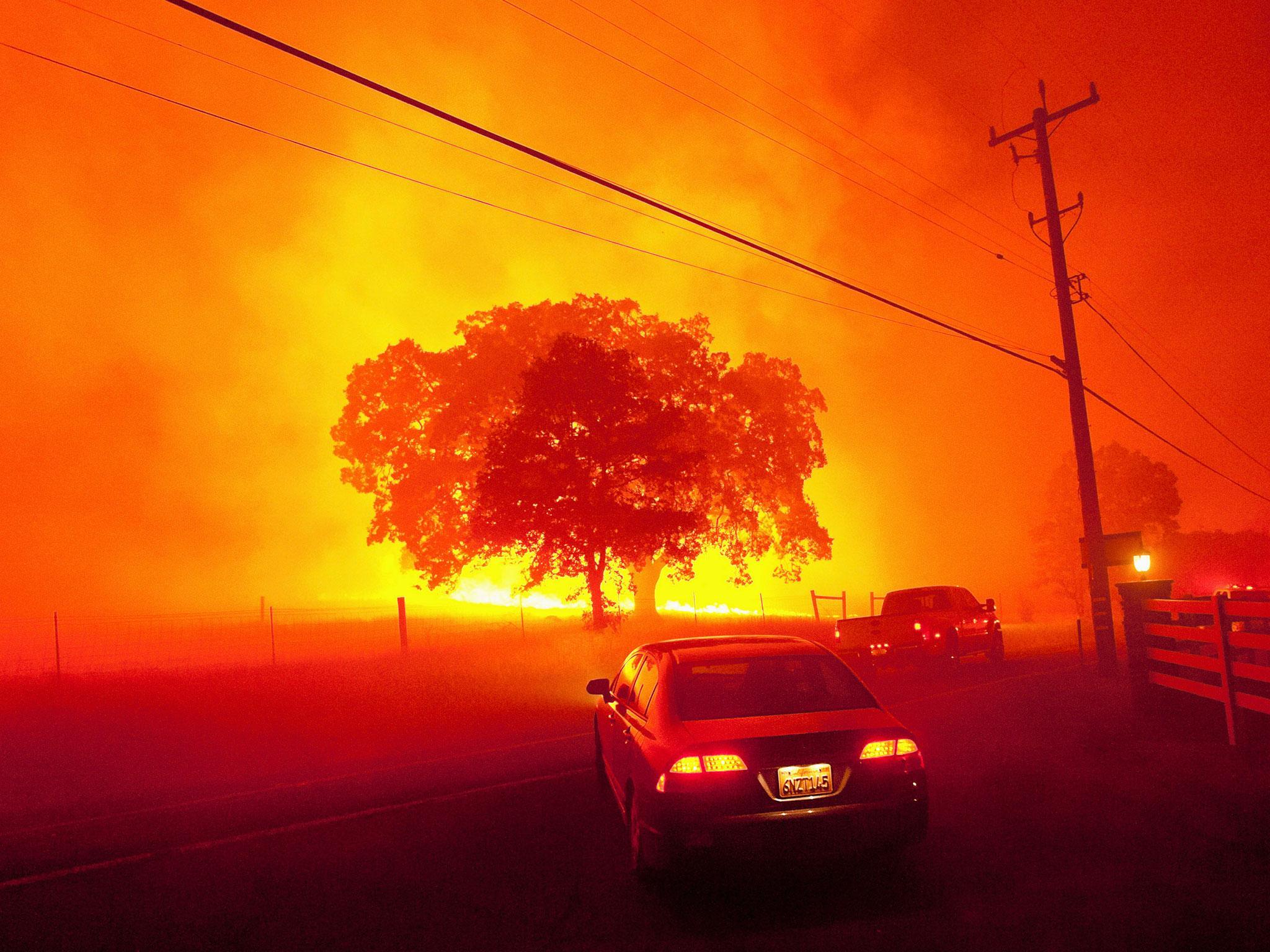Climate change: Nearly 700 'natural thermometers' demonstrate the world is warmer than its ever been
'You can only be smacked in the face by evidence so many times and not see some kind of pattern,' says scientist

Your support helps us to tell the story
From reproductive rights to climate change to Big Tech, The Independent is on the ground when the story is developing. Whether it's investigating the financials of Elon Musk's pro-Trump PAC or producing our latest documentary, 'The A Word', which shines a light on the American women fighting for reproductive rights, we know how important it is to parse out the facts from the messaging.
At such a critical moment in US history, we need reporters on the ground. Your donation allows us to keep sending journalists to speak to both sides of the story.
The Independent is trusted by Americans across the entire political spectrum. And unlike many other quality news outlets, we choose not to lock Americans out of our reporting and analysis with paywalls. We believe quality journalism should be available to everyone, paid for by those who can afford it.
Your support makes all the difference.Planet Earth is warmer than it has been for at least 2,000 years, according to a study that took its temperature from 692 different “natural thermometers” on every continent and ocean on the planet.
In the most comprehensive assessment of how the climate has changed over the period to date, researchers looked at a host of sources of historic information, including tree rings, ice cores, lake and sea sediments, corals, mineral deposits and written records.
What they found confirmed the famous “hockey stick” graph, showing an undulating, but broadly flat, line followed by a sharp uptick that begins at around 1900.
The only plausible explanation for this sudden change is fossil fuel emissions, which have increased the level of carbon dioxide in the atmosphere from about 280 parts per million in the 19th century to more than 400 today.
The warming effect was predicted by the Nobel Prize-winning Swedish scientist Svante Arrhenius in 1895.
Writing in the journal Scientific Data, a team of nearly 100 researchers described how they had created a database of 692 records from 648 different locations in “all continental regions and major ocean basins”.
Some of these natural thermometers covered the entire 2,000-year period, with an average length of 760 years.
The original hockey stick graph, which spanned 1,000 years, was widely praised when it was published in the journal Nature 20 years ago, but also came under attack from climate change sceptics and deniers. Professor Michael Mann, one of the paper’s authors, was abused, made the subject of hostile investigations by US politicians, and even sent death threats.

In a blog post about the new study, one of researchers, Professor Julien Emile-Geay, wrote that it essentially confirmed the hockey stick graph was accurate.
“As a scientist, you have to go where the evidence takes you,” he said.
“You can only be smacked in the face by evidence so many times and not see some kind of pattern. (You will never guess: a HOCKEY STICK!).
“The hockey stick is alive and well. There is now so much data supporting this observation that it will take nothing short of a revolution of how we understand all paleoclimate proxies to overturn this pattern. So let me make this prediction: the hockey stick is here to stay.”
Mr Emile-Geay, of the University of Southern California, said any argument about the basic pattern of warming was over.
“In the coming years and decades, the scientific community will flesh out many more details about the climate of the past 2,000 years, the interactions between temperature and drought, their regional and local expressions, their physical causes, their impact on human civilizations, and many other fascinating research questions,” he said.
“But one thing won’t change: the 20th century will stick out like a sore thumb. The present rate of warming and, very likely, the temperature levels are exceptional in the past 2,000 years, perhaps even longer.
“The hockey stick is alive; long live the hockey stick. Climate denialists will have to find another excuse behind which to hide.”
While in the US there are leading politicians, including President Donald Trump and Lamar Smith, the chair of the House of Representatives’ Science, Space and Technology Committee, who have claimed climate change is a hoax or a plot to create a world government, the UK’s leading sceptics accept much of the scientific analysis of what has happened so far.
Lord Nigel Lawson, the former Conservative cabinet minister and founder of the Global Warming Policy Foundation, told a House of Lords’ committee hearing that carbon dioxide was a greenhouse gas that was having “some effect” on the climate.
Instead, they tend to downplay the future effects with some describing themselves as “lukewarmists”.
Scientists say this makes the same mistake as those who confidently predict Armageddon. Instead, the future is uncertain, with computer models based on the laws of physics predicting anything from a reasonably “lukewarm” 1.5°C of warming to an “end-of-civilisation-as-we-know it” 5°C if carbon dioxide levels hit double the pre-industrial level of 280 parts per million.
The Paris Agreement on climate change committed countries to trying to restrict global warming to below 2°C and as close to 1.5°C as possible. There has been nearly 1°C of warming attributed to human activity to date.
Mr Mann said the new study was “impressive”.
“The end result of course isn’t too surprising – they get a hockey stick-curve no matter how you slice the data,” he wrote in a direct message on Twitter.
“As if we needed it, [it is] further confirmatory evidence that the recent warming spike has no precedent as far back as we can go.
“Human activity is having an unprecedented impact on our climate.”
Join our commenting forum
Join thought-provoking conversations, follow other Independent readers and see their replies
Comments